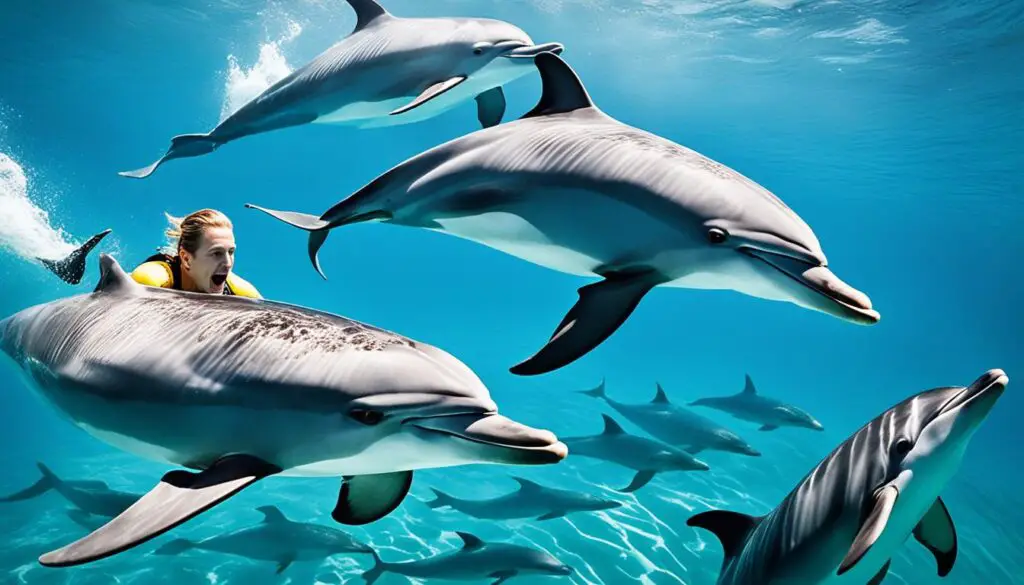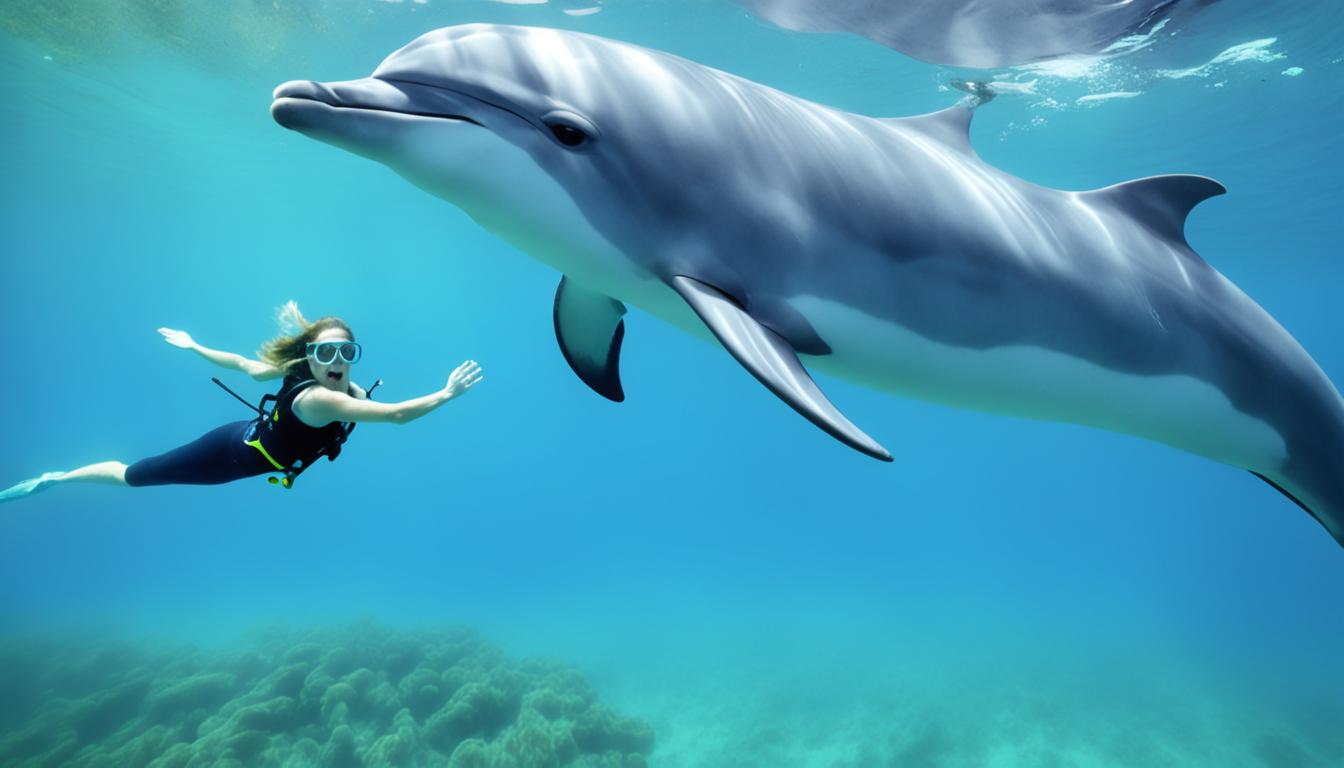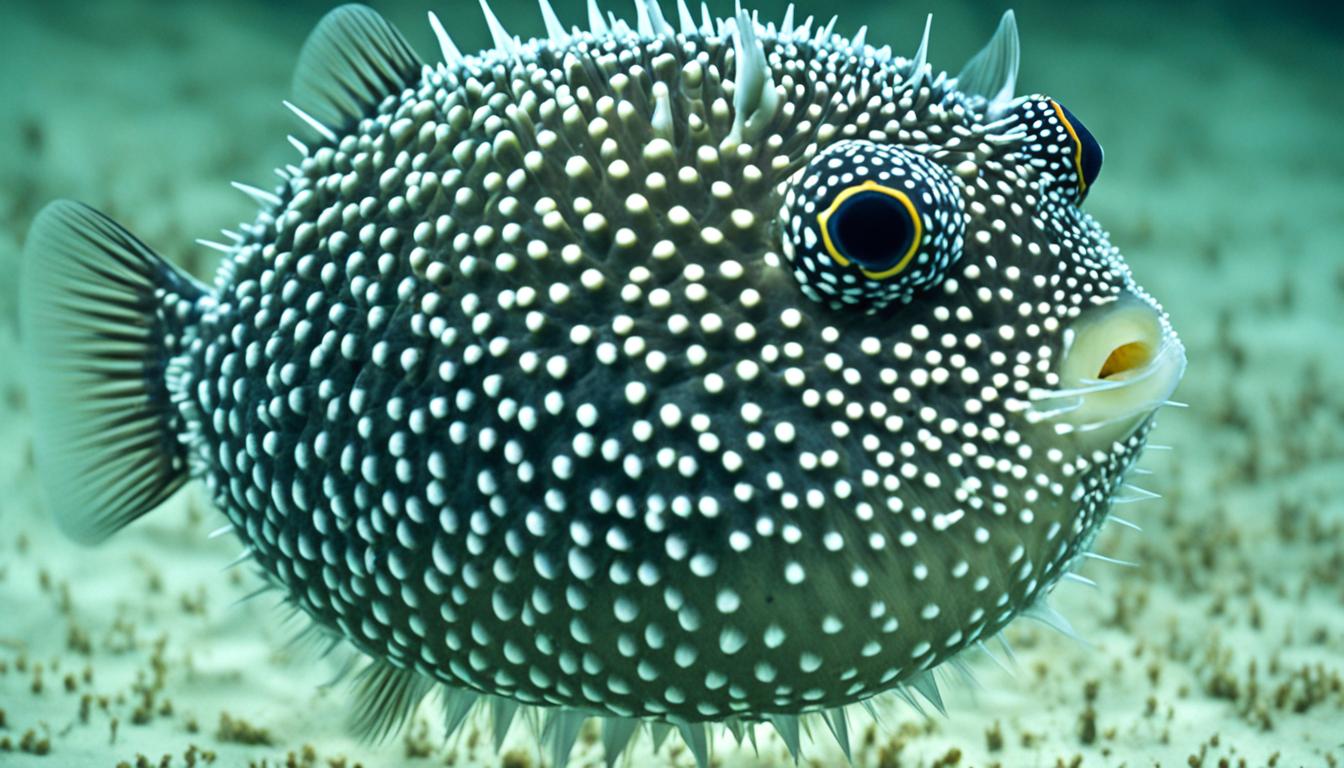Dolphins have captured the hearts of people everywhere, making us wonder: Are dolphins friendly to humans? These smart sea creatures seem playful and social, showing behaviors that make us think they interact with humans. To get to the bottom of this, we’ll look at their natural behavior and how being in captivity or interacting with humans affects them. This article will explore different ways dolphins interact with us, helping us understand what being friendly means to these amazing animals.
Understanding Dolphin Behavior Towards Humans
Dolphins show a wide range of behaviors when they interact with humans. These actions change based on the dolphin type, their surroundings, and past human interactions. Dolphins are often curious and social, which makes them want to connect with people.
How dolphins react to humans can vary a lot. Being calm usually leads to good interactions. But, being aggressive or disturbing them can cause bad reactions. Remember, it’s illegal to feed or bother dolphins in the wild. This can be dangerous for both humans and dolphins, causing injuries and stress.
When dolphins act out, it can lead to serious problems. They might get hurt by boats, get tangled in fishing nets, or feel a lot of stress. It’s important to understand how dolphins behave around humans to have safe and fun times together.
| Behavior Type | Description | Impact of Human Interaction |
|---|---|---|
| Curiosity | Dolphins often approach boats and swimmers, showing interest. | Positive when approached respectfully; negative if they are fed or harassed. |
| Playfulness | Exhibits jumping and swimming alongside boats. | Encourages bonding but can become risky if dolphins feel threatened. |
| Aggression | Rare but can happen if dolphins feel endangered. | Increases with negative human behaviors, posing risks to both parties. |
Are Dolphins Friendly to Humans?
Dolphins often capture the human imagination, leading many to believe in their inherent friendliness. To understand this, it’s essential to explore the common perceptions of dolphins versus the reality of wild dolphins.
Common Perceptions of Dolphins
Movies, books, and TV have made dolphins seem friendly to humans. They are often shown as playful creatures that enjoy interacting with people. These stories make us think dolphins are curious and empathetic, like children.
Stories of dolphins saving swimmers or guiding boats add to their charm. This makes us believe they are truly friendly.
The Reality of Wild Dolphins
But the truth about wild dolphins is more complex. They act on instincts, survival needs, and their own social rules. While some dolphins may seem curious, being friendly is not always clear-cut.
Interactions in the wild can lead to misunderstandings. Dolphins might act aggressively if they feel threatened. It’s important to see them as wild animals, not as friends.
Understanding their behaviors helps us see them for who they are. We shouldn’t project human feelings onto them.
| Perception | Reality |
|---|---|
| Playful companions | Instinct-driven interactions |
| Rescuers of humans | Potential for aggression |
| Intelligent and empathetic | Social behaviors vary by species |
| Friendly interactions | Curiosity can lead to miscommunication |
Dolphin Species and Their Interactions with Humans
Dolphins are among the smartest and most social creatures in the sea. They show many behaviors that show how social they are, especially with humans. Different dolphin species interact with humans in unique ways, which can be both interesting and educational. It’s important to understand these interactions to ensure safe and respectful contact between dolphins and humans, and to help protect them.
Friendly Dolphin Species
The bottlenose dolphin is well-known for being friendly. They love to play and often come close to boats, showing a big interest in humans. Other dolphins, like the common dolphin and the orca, can also be friendly with humans. Each dolphin species has its own way of interacting with people, showing that not all dolphins are equally friendly.
Differences in Social Behavior Among Species
Dolphins of different species act differently around humans. Some are more shy or cautious, while others might be aggressive in some situations. These differences show how diverse dolphins are and why it’s important to know about each species to interact safely with them. Below is a table that highlights some key traits of different dolphin species:
| Dolphin Species | Social Behavior | Interactions with Humans |
|---|---|---|
| Bottlenose Dolphin | Curious and playful | Frequent interactions and friendly approaches |
| Common Dolphin | Social and acrobatic | Often seen interacting with boats |
| Orca | Complex and social | Can be friendly or cautious, depending on individual |
| Risso’s Dolphin | Shy and less interactive | Rarely engages with humans |
| Pacific White-Sided Dolphin | Playful and energetic | Enjoys interacting with boats and people |
Human-Dolphin Interaction Research
Studying how humans and dolphins interact is key to their well-being. Recent studies have shown us the depth of these interactions. They look into how dolphins act with humans and how it affects them.
Scientific Studies on Dolphin Behavior
Researchers dive into dolphins’ social lives, how they talk to each other, and how they react to us. They’ve found that dolphins can be playful but are also stressed by human actions. Things like more boats, tourists feeding them, and dolphin swim programs are being looked at closely.
These activities can change how dolphins live and even their chance of having babies. It’s important to find a balance so dolphins can be with us without losing their natural ways.
Impact of Human Interaction on Dolphin Welfare
Worrying about dolphin welfare is a big deal. Past studies show that being around humans can change dolphins’ lives. It can mess with their groups and how many babies they have.
They might even leave their homes. It’s crucial to watch and learn from these interactions. This way, dolphins and humans can live together without harming the dolphins.
| Type of Interaction | Potential Effects |
|---|---|
| Feeding by Tourists | Increased dependency on humans, alteration of foraging behavior |
| Swim-with-Dolphin Programs | Elevated stress levels, disruption of social hierarchy |
| Boat Traffic | Habitat abandonment, changes in migratory patterns |
| Research Activities | Minimal impact when conducted responsibly, valuable data collection |
Empathy and Communication in Dolphins
Dolphins have amazing ways to talk to each other and even to humans. They use both sounds and body language in their talks. This makes their communication rich and deep.
Dolphin Communication with Humans
Dolphins show us how they feel and understand social signals. They make sounds, move their bodies, and even play with us. For example, they use whistles and clicks to say different things.
They might swim close, dance in the water, or jump out of the sea. These actions are their way of talking to us.
Dolphin Empathy Towards Humans
Studies show that dolphins can feel for humans. They have helped people in trouble, like saving swimmers or guiding them to safety. This shows how deep their feelings can be.
But, every dolphin is different. Still, the idea that dolphins can feel for us is really interesting.
| Communication Method | Description | Example of Interaction |
|---|---|---|
| Vocalizations | Sounds used to express feelings | Whistles and clicks that signal excitement |
| Body Language | Physical movements conveying emotions | Spinning or jumping to play |
| Social Play | Engagement in playful activities with humans | Riding waves or surfacing with humans |
Learning how dolphins talk to humans and feel for us helps us connect better. It lets us have respectful and meaningful times with these amazing animals.
Risks Associated with Dolphin Encounters
It’s important to know the risks associated with dolphin encounters for the safety of both dolphins and humans. Interacting with wild dolphins can lead to negative effects, impacting their health and natural ways of living.
Wild Dolphins and Human Activities
Human actions pose many threats to wild dolphins. Swimming too close, feeding, or touching them can stress and hurt them. These actions change their natural behaviors. It’s key to keep a safe distance to protect them and their natural ways.
Legal Protections for Dolphins
Laws offer crucial legal protections for dolphins, showing the importance of respectful interaction. The Marine Mammal Protection Act is a main rule that stops harmful actions. Knowing these laws helps us see why we must be responsible when meeting dolphins. Following these rules ensures safe interactions, protecting dolphins and their homes.

Benefits of Human-Dolphin Relationships
Interacting with dolphins brings big benefits for both humans and these smart sea creatures. These relationships offer more than just fun times. They help with learning and saving marine life.
Positive Outcomes of Controlled Interactions
When humans and dolphins meet in places like marine parks, learning happens a lot. These meetings teach us about dolphins and why we need to protect them.
- Enhancement of public awareness about marine issues
- Promotion of dolphin welfare through outreach programs
- Opportunities for scientific research that improve conservation strategies
Educational Opportunities and Conservation
Learning from dolphin programs helps us talk about saving the ocean. These programs make us want to help protect marine life. This helps keep these amazing animals safe.
- Hands-on learning experiences that foster a greater appreciation for marine life
- Involvement in conservation projects that have a direct impact
- Development of positive attitudes toward environmental stewardship
Responsible Practices for Dolphin Encounters
Meeting dolphins can be an amazing experience. But, it’s key to follow responsible practices to protect these amazing creatures. Always keep a safe distance from wild dolphins. This keeps you safe and lets dolphins act naturally without stress.
Following laws that protect dolphins is also important. Don’t feed or bother them. Ethical interactions with dolphins are based on respect and admiration, not exploitation. By doing this, you help keep their natural behaviors and homes safe.
Learning about dolphins is also crucial. Educational programs can teach you how to help protect them. By knowing about their lives and challenges, you can support ethical dolphin interactions. This way, you make your experience better and help dolphins for the future.









